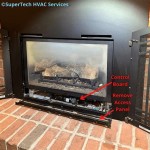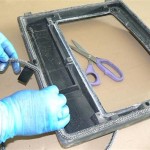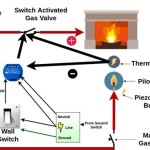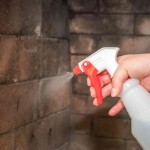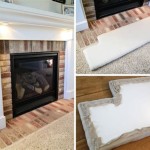How To Redo A Fireplace Hearth: A Comprehensive Guide
A fireplace hearth serves as a crucial safety feature, providing a non-combustible barrier between the fireplace opening and the surrounding flooring. It’s also a significant design element, influencing the overall aesthetic of a room. Over time, hearths can become worn, damaged, or simply outdated. Redoing a fireplace hearth can revitalize the look of a living space and ensure continued safety. This article provides a comprehensive guide to redoing a fireplace hearth, covering planning, preparation, removal, installation, and finishing techniques.
Planning and Preparation
The initial phase of redoing a fireplace hearth involves careful planning. This includes assessing the existing hearth, determining the desired outcome, selecting materials, and obtaining necessary permits. Thorough planning at this stage minimizes complications and ensures a successful project.
The first step is a comprehensive assessment of the existing hearth. Examine the hearth for cracks, chips, stains, and structural damage. Note the dimensions of the current hearth, including its length, width, and height. This information will be crucial when selecting replacement materials and designing the new hearth.
Next, define the desired outcome for the project. Consider the overall aesthetic of the room and how the hearth will complement it. Research different hearth styles and materials. Common options include brick, tile, stone (such as granite, marble, or slate), and concrete. Each material offers unique visual appeal, durability, and cost considerations. Examine the fireplace itself, considering its style and the surrounding décor. A modern fireplace might pair well with a sleek, minimalist hearth made of large format tiles, while a more traditional fireplace could benefit from a brick or stone hearth with a rustic texture.
Material selection is a critical decision. Brick offers a classic, warm look and is relatively inexpensive. Tile provides versatility in design and color and can be easily cleaned. Stone offers a luxurious appearance and exceptional durability but can be more expensive and challenging to install. Concrete can be molded into various shapes and finishes, offering a contemporary and customizable option. Consider the heat resistance, moisture resistance, and maintenance requirements of each material when making your selection. Samples should be obtained to assess how the material looks in the actual room lighting and alongside the existing fireplace.
Before starting any work, it is vital to check local building codes and regulations regarding fireplace hearth construction. Some jurisdictions may require permits for hearth modifications, especially if structural changes are involved. Checking with the local building department can prevent costly delays and ensure compliance with all applicable regulations. If unsure about any aspect of the code requirements, consulting with a qualified contractor or building inspector is recommended.
Gather all necessary tools and materials before beginning the demolition process. Essential tools include a hammer, chisel, safety glasses, work gloves, a dust mask, a pry bar, a level, a measuring tape, a trowel, a mixing bucket, and a wet saw (for cutting tiles or stone). Materials will include the chosen hearth material, mortar or thin-set adhesive, grout (if using tile or stone), backer board (if needed), and any necessary sealants or finishes.
Removal of the Existing Hearth
The removal of the existing hearth is a critical step that requires care and precision to avoid damaging the surrounding area. This process involves breaking up the old hearth material and carefully removing it without compromising the structural integrity of the fireplace or the surrounding floor.
Before beginning the demolition, protect the surrounding area. Cover the floor with drop cloths or plastic sheeting to prevent scratches and dust accumulation. Seal off any nearby doorways to contain the dust. Wearing safety glasses, work gloves, and a dust mask are essential to protect against flying debris and dust inhalation. Proper ventilation is also important, so open windows and doors if possible. If the hearth is adjacent to a carpeted area, consider using a tack strip and plastic sheeting to create a barrier.
Begin by using a hammer and chisel to break up the existing hearth material. Start at the edges and work towards the center. For larger hearths, a demolition hammer or jackhammer may be necessary. Apply controlled force to avoid damaging the subfloor or fireplace structure. If the hearth is tiled, use a grout removal tool or a utility knife to remove the grout before attempting to pry loose the tiles. This will minimize chipping and cracking of the tiles.
As the hearth material is broken up, carefully remove the pieces. Use a pry bar to lift larger sections. Dispose of the debris in a designated container. Be mindful of the weight of the materials to prevent injuries. If the hearth is particularly heavy, consider enlisting help to remove the debris safely. Check for any wiring or plumbing that may be embedded in the hearth before demolishing it further.
Once the existing hearth material has been removed, inspect the subfloor for damage. Repair any cracks, holes, or unevenness. Use a concrete patching compound or self-leveling underlayment to create a smooth, level surface. If the subfloor is severely damaged, it may need to be replaced entirely. Ensure the subfloor is clean and free of dust and debris before proceeding to the next step.
Installation of the New Hearth
The installation process involves preparing the subfloor, laying the hearth material, and applying finishing touches. Proper installation techniques are crucial to ensure the hearth is level, stable, and visually appealing.
Before laying the new hearth material, prepare the subfloor. If the subfloor is concrete, ensure it is clean, dry, and free of any loose debris. If the subfloor is wood, it may be necessary to install a layer of cement backer board to provide a stable, non-combustible surface. The backer board should be screwed to the subfloor at regular intervals, following the manufacturer's instructions. Proper preparation of the subfloor is essential for a long-lasting and structurally sound hearth.
Begin laying the hearth material, starting from the center and working outward. Use a level to ensure the hearth is perfectly horizontal. If using tile or stone, apply thin-set adhesive to the back of each piece and press it firmly into place. Use spacers to maintain consistent grout lines. If using brick or concrete, apply mortar between the bricks or concrete blocks. Ensure the mortar joints are uniform and neatly finished. For larger slabs of stone or concrete, mechanical fasteners may be necessary to secure the hearth to the subfloor. Follow the manufacturer's recommendations for the specific material being used.
After the hearth material has been laid, allow the adhesive or mortar to cure completely. This may take 24 to 72 hours, depending on the product and the ambient temperature. Avoid walking on the hearth during this time. Once the adhesive or mortar has cured, remove the spacers and apply grout (if using tile or stone). Use a grout float to press the grout into the joints and then wipe away the excess with a damp sponge. Allow the grout to dry according to the manufacturer’s instructions.
Finally, apply any necessary sealants or finishes to protect the hearth material. Stone and concrete should be sealed to prevent staining and moisture damage. Brick can be painted or stained to achieve the desired look. Follow the manufacturer's instructions for the specific sealant or finish being used. Inspect the hearth for any imperfections and make any necessary repairs. Clean the surrounding area and remove any remaining debris. The new fireplace hearth should now be functional and aesthetically pleasing, enhancing the overall look of the room and providing a safe and effective barrier for the fireplace.

Diy Fireplace Makeover At Home With The Barkers

Updating Fireplace Hearth No Demolition Required Single Girl S Diy

Diy Fireplace Makeover At Home With The Barkers
5 Amazing Inexpensive Easy Fireplace Remodel Transformations Designed

Diy Fireplace Mantel Redo Diyaffair

Fireplace Mantle Redo In Time For Diary Of A Quilter Quilt Blog Home Living Room With Hearth Decor

17 Fireplace Remodel Before And After How To Your Brick Makeover Redo

How To Update The Look Of Your Fireplace

How To Update A Fireplace Hearth And Mantel Pasha Is Home

47 Amazing Fireplace Remodel Ideas To Diy Artsy Pretty Plants

